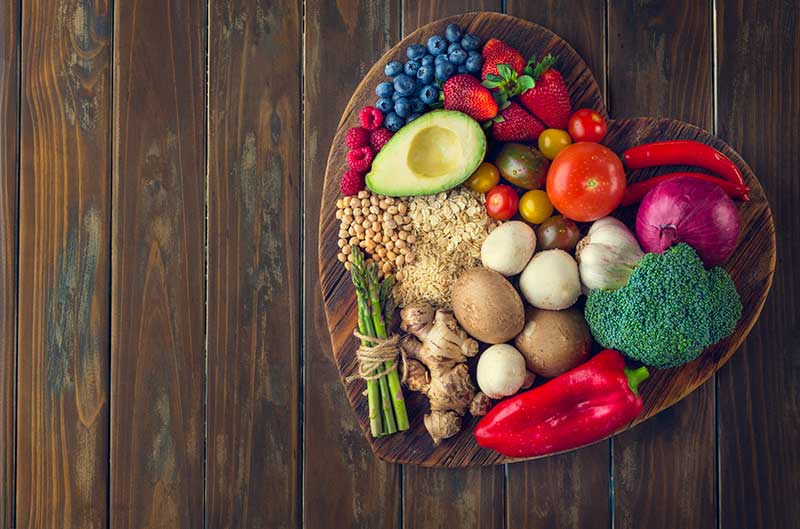A content planning process has many moving parts and pieces. Just like a recipe, each component needs to be included for the dish to turn out right, which can be overwhelming in larger organizations with multiple team members and complex workflows.
How do you put it all together? A purpose-built calendar application could be the solution you need, but what are the right ingredients for cooking up a kickass content calendar?
Why Content Teams Use Content Calendars
Content teams are typically made up of a variety of creative roles. You have writers, editors, strategists, designers and project managers all working on different pieces. The bigger your company and content team, the more siloed it can become, which means there are lots of cooks and little visibility across the kitchen.
As your content operation matures and scales, most teams outgrow simple spreadsheets or generic task list applications.
The key features of a content calendar enables brands to organize, visualize, and communicate editorial plans. It allows everyone on your team to have a clear view of what’s due, what’s done, and the status of each content project at this very moment.
Your content calendar also provides a strategic framework for the ongoing story you want to tell about your brand. It allows you to have a holistic view of your content plans, which turns ideas and broad strategies into an actionable map that can be tweaked and adjusted as you learn about your content’s impact. You can create multiple content calendars for different brands, campaigns, or audience segments.
The Important Ingredients

The list of ingredients you’ll need to assemble a kickass content calendar falls within two main categories: strategic ingredients and technological ingredients. Both sets of ingredients are of equal importance to create tasty content dishes.
Strategic ingredients provide a good base and the herbs and spices that will ultimately give your offering a winning flavor. Whereas the technological ingredients give your cooks the capabilities and tools to be efficient, work together, and let their creative juices flow freely.
And finally, let’s not forget the mixing bowl that everything goes into, your content marketing platform.
A little bit of this and a lot of that, let’s walk through the essential ingredients.
Your Strategic Ingredients List
✔️ Strategic Goals
Depending on the strategic objectives of your organization and who is being served by your content offering, your endeavors likely have an overriding purpose. Perhaps your offerings will be simple and targeted, like being the best grilled cheese and tomato soup restaurant in the US, or you’ll be supporting a huge menu for many audiences.
The key consideration here is how you will boil down those objectives into the actionable ingredients of your content planning process.
For example, you may have a specific topic you need to cover that you know to be important to your key target audience. Therefore, you might set a goal that your team needs to create 10 pieces of content per month on that topic. This obviously dictates how you need to plan each month, alongside other similar goals that have been identified.
✔️ Content Frequency
This is a relatively easy part of the recipe. You simply need to determine how much content you want to create per month for the various channels you’re supporting.
For example, how many blog posts should you publish each month? Maybe you have a blog cadence already, but it may not be the right amount. HubSpot recently looked at blogging data from over 13,500 companies to find that perfect number.
The research is vast. In a nutshell, there are many factors that impact how often you should blog, such as: company size, B2B vs. B2C, and blog length. The magic number seems to be around 11 posts per month, but what works for you may be different depending on how many content creators you have and other constraints.
✔️ Topic Clusters
Your topic clusters should be identified based on the alignment of your company’s goals and subject matter expertise with your customers’ needs and organic search patterns. Think of using your clusters like peeling the layers of the onion in your recipe.
You can start with a broad topic, then identify sub-categories and tightly connected sub-topics that guide your brainstorming of the actual content assets you’ll produce, whether that be a blog post, eBook, infographic, or social media post.
✔️ Key Dates and Time-bound Themes
The last, essential, strategic ingredient revolves around the schedule of company happenings, promotions, product/service launches, events and editorial themes that will take place throughout any given year.
Mature organizations often identify this schedule of campaigns and events 12 months in advance. At a minimum, go through the next few months and map out what you know is coming up in your organization. If in your third quarter you’re releasing a new product, it makes sense that your content theme or topic clusters revolve around related keywords and the challenges that product solves.
With proper care of feeding of your content calendar software, these key dates and deadlines will be hard to miss. Not that you’ll never miss a deadline again, but it’s less likely that an event or promotion falls through the cracks.
Your Technological Ingredients List

Much like a commercial kitchen is designed for efficiency with different stations set up to cook specific types of food, a robust content marketing platform provides a variety of tools to facilitate scheduling and efficient production of different types of content. Let’s break it down further.
✔️ Channel & Campaign Management
Today, most marketing teams are responsible for managing and producing content for multiple channels. Each channel may have a unique strategy, a dedicated team supporting it, and a specific content publishing schedule. Therefore, companies may end up with a large number of channel-specific content calendars to manage.
This recipe gets dicier when multi-channel campaigns need to be executed across multiple regions. Trying to manage all this in something other than a robust content calendar platform is simply bonkers.
You should be able to organize content channels and campaigns by team, region, business unit, or other parameters. Users should be able to simultaneously manage shared and private calendars.
Drilling down even further, you also need some advanced functionality here like being able to filter by topic, audience, content type, keyword and more. Managing by task, asset, or project is also a critical ingredient.
✔️ Collaboration & Ideation
Content teams have to be able to collaborate, but this is easier said than done in large organizations. Your content calendar should be a space where notes, comments, files, and more can be shared and discussed.
Within this ingredient, you’ll also want a defined space for ideas. This is an area where everyone engaged with marketing your business can input ideas and requests, and share their perspectives. Having this type of space helps to cultivate a collaborative culture.
✔️ Reporting to Maintain Alignment
Now that you’ve whipped up your ingredients and have your main dish, reporting is like getting feedback on whether it was delicious.
You want your audience to consume your content. So, you need to know, via content analytics, how effective it is in engaging your audience and leading them to interact with your brand further so they’ll eventually convert to a customer.
It’s no secret that content drives conversions as today’s buyer is very savvy, reading on average 11.4 pieces of content before making a purchasing decision. Your content calendar’s reporting will allow you to determine if you are meeting this buyer expectation.
More to Consider for Your Content Calendar
We’ve gone over the ingredients to get your kickass content calendar rolling, but there are still a few other areas to address.
How far in advance should you plan?
Most experts would say to start with six months; however, your calendar must be agile to account for unknowns like major things that happen in your company and industry.
Who should be involved in creating the calendar?
Anyone who is responsible for content or marketing should have a role. Some roles will be more prominent than others. But welcome all ideas that align with your documented strategy.
What makes a content calendar effective?
Starting with the right ingredients is the first step. Being consistent with these is essential as well. You also must have full adoption by users, which is more likely when you have an easy-to-use platform.
Ready to get your content calendar cooking?
Try out the DivvyHQ platform and all its content calendar functionality FREE for 14 days to see if it’s right for your brand.